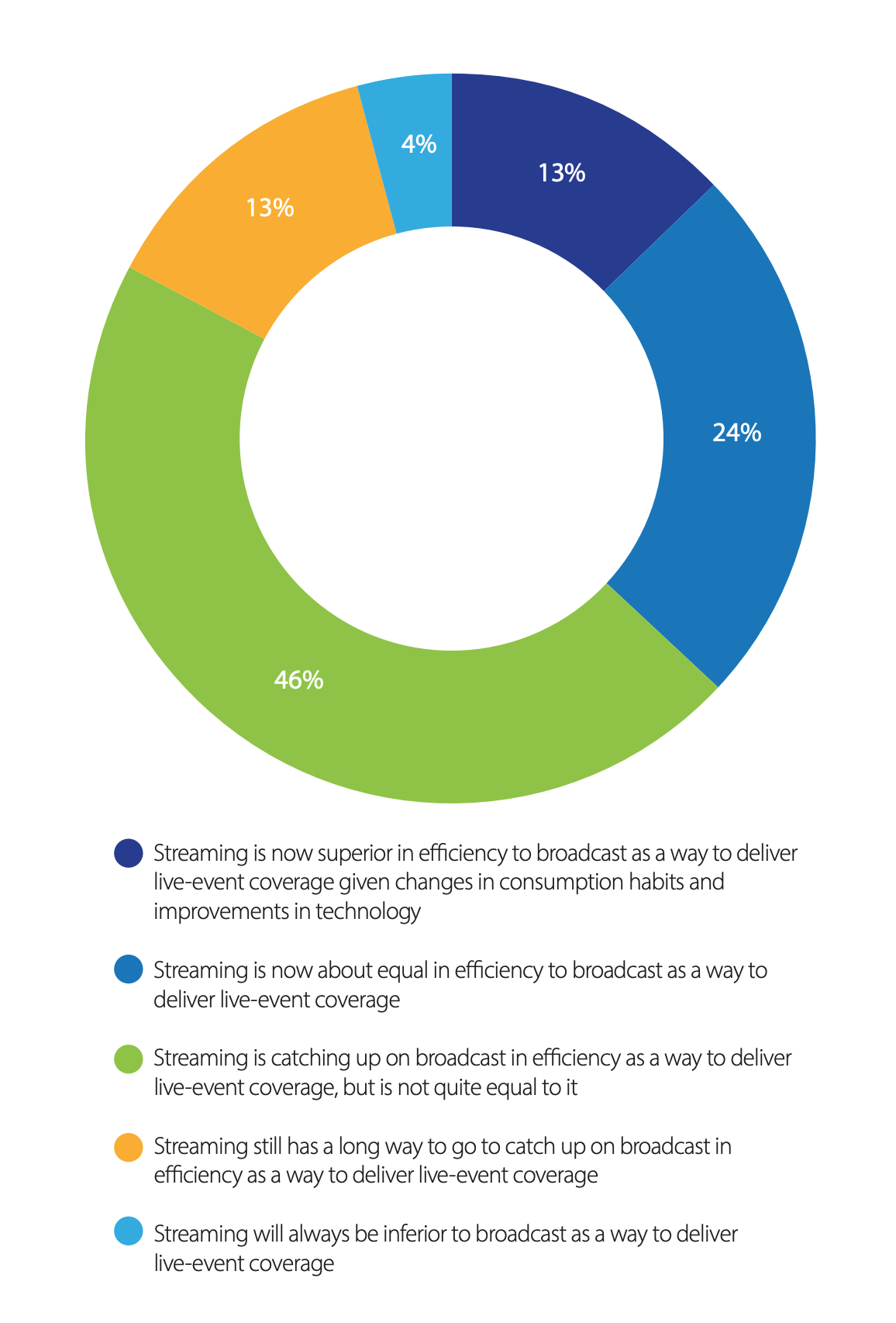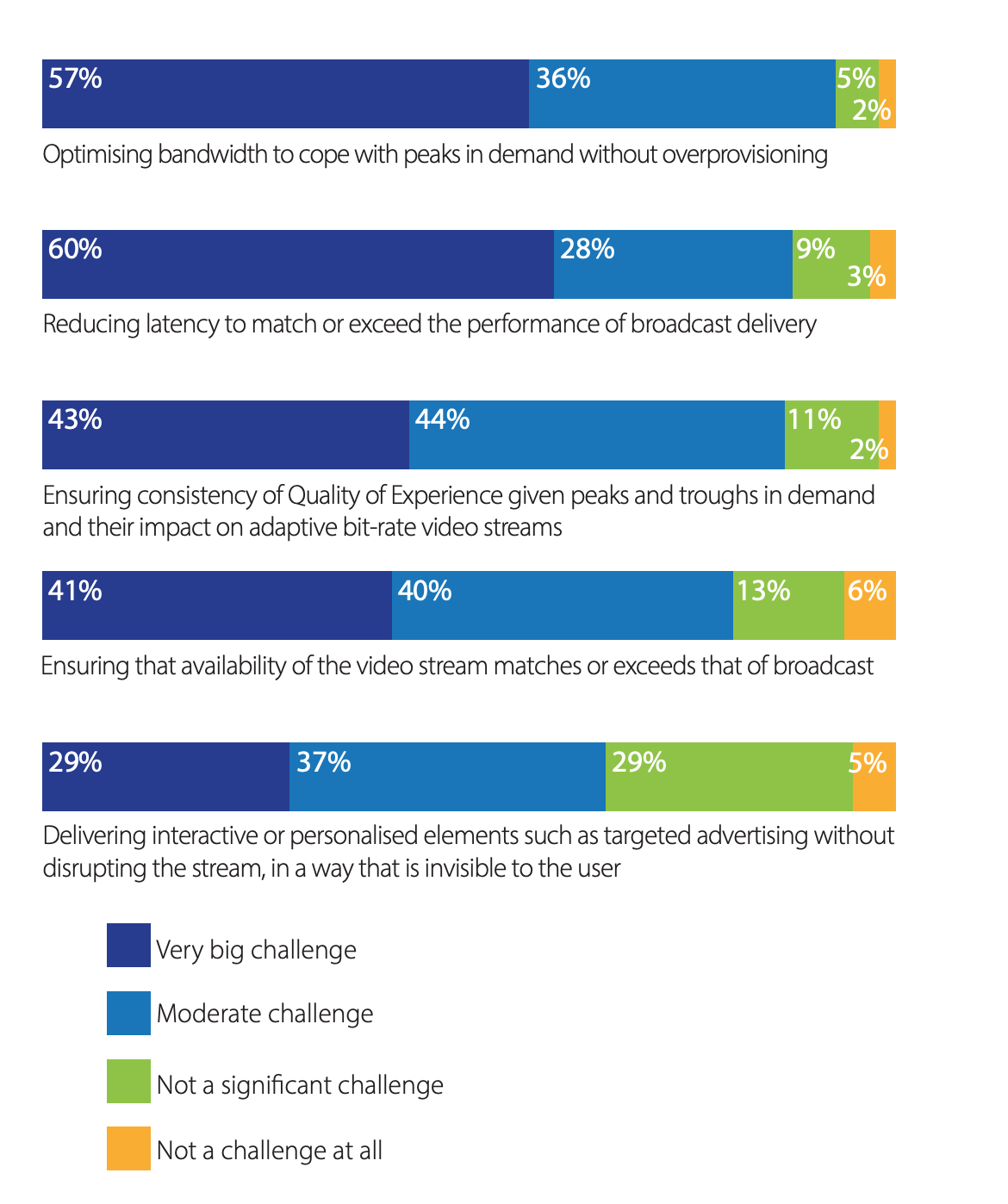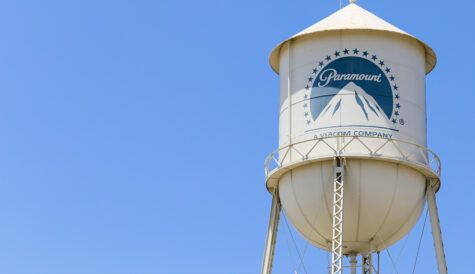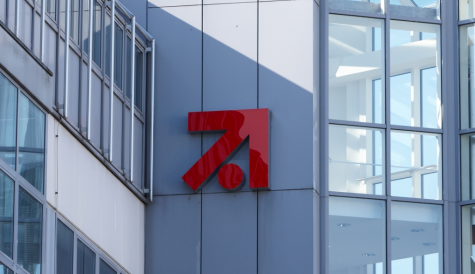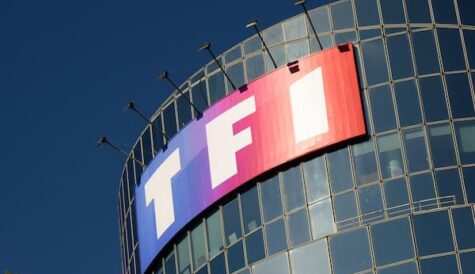The live-streaming revolution
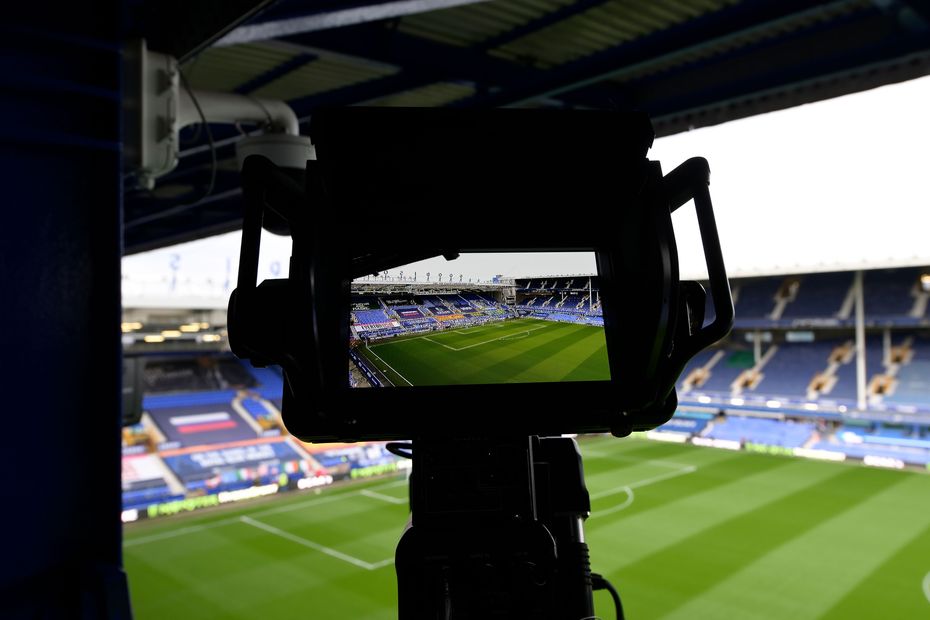
Live-streaming, including of major sports, has been one of the big stories of the video distribution business over the last couple of years.
The last few years have seen the incorporation of live services into broader mainstream offerings like NBCUniversal’s Peacock and the just-launched Paramount+ as well as the launch of dedicated live-streaming sports services such as DAZN, FITE TV and others.
As viewing events over the internet increases in popularity, one of the questions that is frequently raised about live streaming is whether it can truly replace one-to-many broadcast delivery.
The growth in live streaming is being driven, on the demand side, by a number of factors. First, people are consuming content on multiple devices. Second, there is demand for content that has not found a place in mainstream broadcast services. Third, there is increased interest in news and sports targeted at expatriate and international audiences, among others.
As a part of the Digital TV Europe Industry Survey 2021, we questioned industry insiders, principally pay TV operators and broadcasters, OTT streaming companies, content creators and aggregators, regulators and technologists, about their views on live-streaming.
We asked them for their opinion about how far and how fast live-streaming could supplant broadcast. We also asked them about the key technical and commercial challenges facing live-streaming providers and about the unique features that can add value to services.
Can live-streaming of major sports and other big events replace broadcast?
This question is likely to come into sharper focus as pressure grows on broadcast spectrum and demand for fuller coverage of sports and other live events grows. Whether streaming makes sense as a replacement technology for broadcast is still debated. Streaming can clearly expand the reach and coverage of sports, creating space for coverage of additional matches, for example, as well as enabling global delivery.
Broadcast delivery, by contrast, is limited by the available spectrum. However, the ‘one-to-many’ nature of broadcast is still perceived to be more efficient for delivery of a live event to a large audience.
Among our survey respondents, the majority opinion is that streaming is just about there in terms of matching broadcast for efficiency – but not quite there. Some 46% of respondents believe that streaming is catching up on broadcast in terms of efficiency for live events but is not yet quite equal to it. A further 24% believe streaming is now about equal in efficiency to broadcast.
On either side of this block of opinion taking the middle ground stand smaller groups of streaming cheerleaders and sceptics. Some 13% of respondents believe that streaming is now superior in efficiency to broadcast for live events, particularly when changes in consumption and improvements in technology are accounted for together.
Another group is more sceptical. Some 13% believe that streaming still has a long way to go to catch up on broadcast, and a smaller group of just under 5% believe that streaming will always be inferior to broadcast for live event coverage.
The results show how far streaming has come, with a clear majority taking the view that it is at least close to equaling broadcast.
The challenges associated with live-streaming to a large audience
If live-streaming is not yet the equal of broadcast in terms of perceptions of how efficient it is, that reflects the fact that livestreaming to a mass audience without freezing, buffering or a high degree of latency is not a trivial task. To overcome these problems, streaming providers must plan for how to meet sudden peaks in demand that may be unpredictable.
Two inter-related challenges therefore stand out for our survey respondents – how to optimise bandwidth to cope with peaks in demand without over-provisioning; and how to reduce latency to match or exceed the performance of broadcast.
For live sports, the importance of latency is famously illustrated by the example of members of a household hearing their broadcast viewing neighbours cheer a goal before they see it on their own live stream.
Latency arises from the need to compensate for variations in available bandwidth and sudden shifts in demand that can cause a capacity crunch. Streaming providers that face the same economic constraints as any other business are not generally able to provision unlimited amounts of bandwidth to solve the problem.
Beyond optimising bandwidth and reducing latency, the next biggest challenge, in the view of respondents, is ensuring consistency of Quality of Experience given peaks and troughs in demand and their impact on adaptive bit-rate streams. If streamers rely on adaptive bit-rate encoding to see them through shifts in the ratio of capacity to demand, sudden shifts in demand can result in jarring changes in video quality as adaptive streams collectively drop to a lower resolution in response.
The next most important challenge, in the view of respondents, is the related one of ensuring that the availability of video stream matches or exceeds that of broadcast. Streamers may be able to provide enhanced coverage of major sports events, but for the main action they are likely still to be competing to some extent with a broadcast stream. Broadcast sets the bar in terms of perceptions of quality. Increasingly consumers will not accept lower quality from streamed video, whether on the main screen in the living room or from their mobile phone.
The final challenge – rated as relatively less important by our survey sample, but still considered to be significant – is that of delivering interactive or personalised services such as targeted advertising without disrupting the stream. Streaming video needs to pay for itself, and targeted advertising is a part of this. The seamlessness of personalised advertising and other personalised elements of the stream are likely to become more significant as competition increases and the business case for streaming comes to the fore.
The preference of many, but still a way to go
Live-streaming has grown massively in terms of popularity over the last few years and is now seen as a key feature of many mainstream services. While the one-to-many benefit of broadcast is still to some extent seen as the most efficient way to deliver, say a major live sports event to a mass audience, ongoing changes in consumption habits and advances in technology mean that the ground is shifting.
Media companies and service providers delivering live-streaming still face a number of challenges. The biggest two are how to reduce latency to the point where live-streaming matches or exceeds the performance of broadcast, and the related challenge of how to optimise bandwidth to cope with peaks in demand without consistently over-provisioning.
Changes in consumption and technological innovation together could contribute to live-streaming eclipsing broadcast. In the view of our survey respondents, this is indeed likely to happen but it will probably take some time before the transition is complete.
This piece is adapted from a section sponsored by Harmonic in the Digital TV Europe Industry Survey 2021. To read the full report for free click here.

